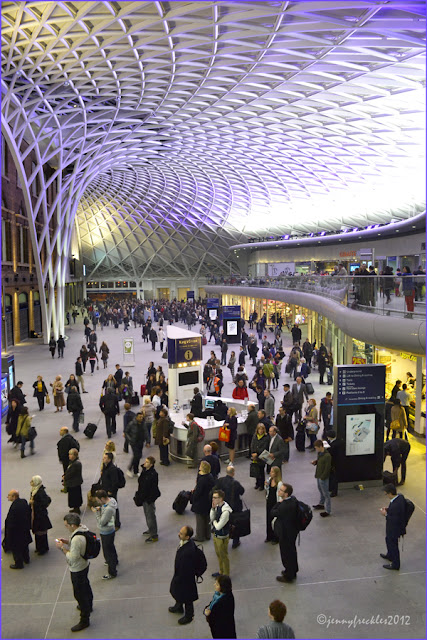
This imposing archway is the entrance to
Burlington House, on Piccadilly in London, which houses several august artistic and scientific societies including the Royal Academy of Arts. My main reason for visiting last week was to see the exhibition,
'A Bigger Picture' by David Hockney RA - who, of course, as 'a local lad' is much loved by us here in Saltaire. (
Salts Mill is proud to hold a large collection of his work. Hockney was a close friend of the late Jonathan Silver, the entrepreneur who 'rescued' the mill.)
I was so excited to see this major exhibition of Hockney's landscape work, much of which has been created in the last few years especially for this show. The paintings, many of them large-scale and wonderfully colourful, were inspired by the Yorkshire Wolds, where Hockney now lives. In fact, if it wasn't for Jonathan Silver they might never have been created. It's said that David Hockney came back to Yorkshire from California to support his friend when he was dying from cancer, and began to notice and be inspired again by the Yorkshire landscape.
 |
I treated myself to the exhibition catalogue and
thereby received a plastic bag to flash around too! |
There have been many features and TV programmes about the exhibition. Some of the critics seemed pretty underwhelmed (they often are!) - but I loved the works, especially the amazing series of 51 prints (made from drawings on an iPad) and one large painting recording the arrival of spring in Woldgate, East Yorkshire. In the majestic setting of the RA's huge main gallery, the pictures have a vibrancy and impact that I found really thrilling. It seems brilliant to me that a man in his mid 70s should be using modern technology so skilfully to create such vivid scenes, bursting with life and beauty. There were also some video works that I found equally enthralling, taken with nine cameras on a grid. My reaction was more akin
to this writer's (in a Yorkshire paper of course!)
I'm so glad I was able to see the exhibition, despite the crowds (I'd have enjoyed it even more with fewer people to contend with). When it is broken up in a few weeks time, I dare to hope that some of the works will find their way to Salts Mill, either permanently or temporarily. Who knows?






































